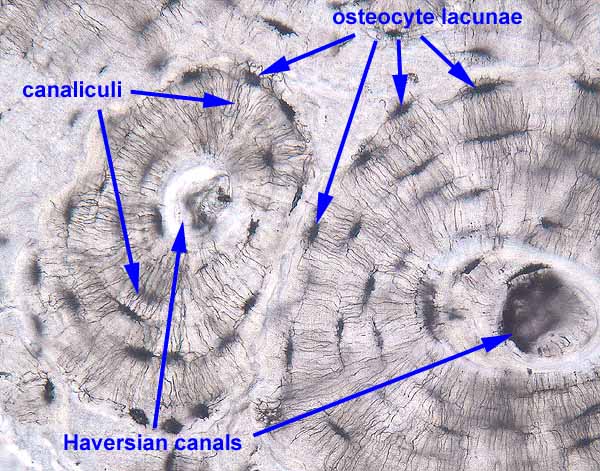


The specimen in this slide is "ground bone," a sliver of bone from which all organic materials (cells and collagen) have been removed, so we see here only the remaining mineral structure. Bone dust, a byproduct of the grinding process by which the specimen was prepared, may be found in Haversian canals.
Bone lacunae are small, spindle-shaped spaces (appearing dark in this image), each containing an osteocyte that is left behind by osteoblasts during the process of remodelling.
The long axis of each lacuna lies parallel to the lamella within which it resides. Canaliculi tend to run perpendicular to the lamella, providing connections across the lamellae from the Haversian canal.
Osteocyte process extend into the canaliculi, where they contact one another to pass nutrients from one cell to another. Without canaliculi, the bone matrix would prevent diffusion and osteocytes would die.
The variously bright and dark texture visible in Haversian canals in specimens of "ground bone" is bone dust, an artifact of the grinding process by which such specimens are prepared.
Click on a thumbnail below for additional information.
Comments and questions: dgking@siu.edu
SIUC / School
of Medicine / Anatomy / David
King
https://histology.siu.edu/ssb/NM036b.htm
Last updated: 13 August 2021 / dgk